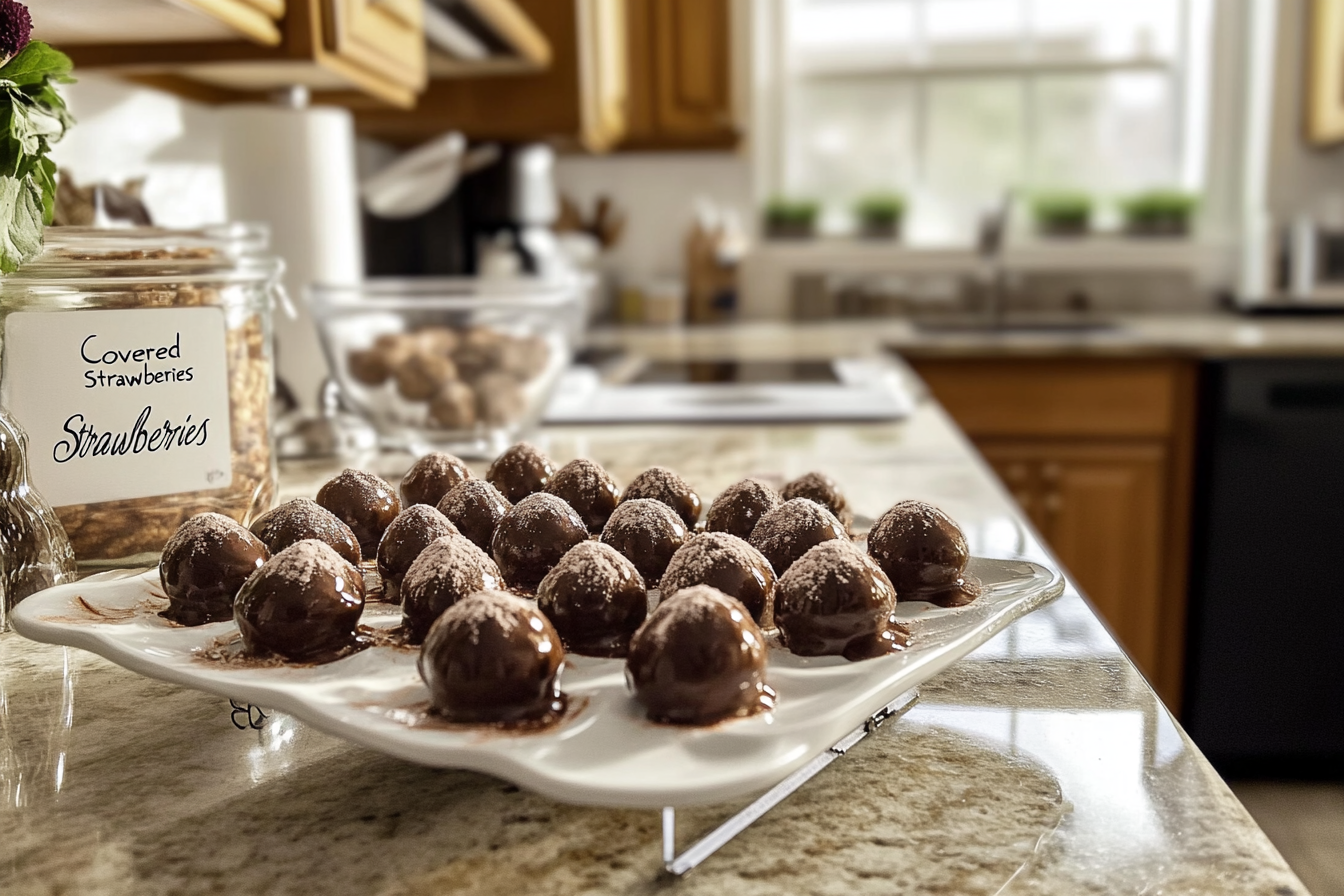Carob Melt Like Chocolate is a popular alternative to chocolate, often used by those seeking a caffeine-free or naturally sweet substitute. However, if you’ve ever tried melting carob, you might have noticed that it behaves quite differently from chocolate. This guide explores whether carob melts like chocolate, why it behaves differently, and how to work with it successfully in your recipes.
What Is Carob?
Carob Melt Like Chocolate is derived from the pods of the carob tree (Ceratonia siliqua), native to the Mediterranean region. It’s processed into carob powder or chips, which are commonly used in baking and confections as a chocolate substitute.
Overview of Carob Powder and Carob Chips
- Carob Powder: Made by grinding roasted carob pods into a fine, naturally sweet powder. It’s often used in baked goods, smoothies, and hot drinks.
- Carob Chips: Similar to chocolate chips but made from carob powder, sweeteners, and stabilizers.
How Carob Differs from Cocoa and Chocolate
- No Cocoa Butter: Unlike chocolate, carob chips do not contain cocoa butter, which is responsible for chocolate’s smooth melting properties.
- Naturally Sweet: Carob is sweeter than cocoa, eliminating the need for added sugar in many recipes.
- Caffeine-Free: Carob contains no caffeine or theobromine, making it suitable for those avoiding stimulants.
The Melting Characteristics of Chocolate
Understanding how chocolate melts helps highlight the differences with carob.
Why Chocolate Melts Smoothly: Cocoa Butter and Fat Content
- Cocoa Butter: Chocolate’s high cocoa butter content allows it to melt smoothly at body temperature, creating a luscious texture.
- Fat Content: The natural fats in chocolate provide a rich, glossy consistency when melted.
Melting Points of Different Types of Chocolate
- Dark Chocolate: Melts at around 86–90°F (30–32°C), with a high cocoa butter content.
- Milk Chocolate: Melts at 85–88°F (29–31°C), softer due to added milk fats.
- White Chocolate: Melts similarly to milk chocolate, but contains no cocoa solids.
Does Carob Melt Like Chocolate?
The simple answer is no, carob does not melt like chocolate. Here’s why:
Key Differences: Fat Content and Composition
- Low Fat Content: Carob chips typically lack the high-fat cocoa butter found in chocolate, resulting in a less smooth melting process.
- Additives and Stabilizers: Many carob chips contain stabilizers that prevent them from melting easily, maintaining their shape in baked goods.
Why Carob Chips Don’t Melt Smoothly Like Chocolate
Carob chips are designed to hold their shape under heat, which is ideal for baking but less suitable for recipes requiring a smooth, melted texture. When heated, they often become lumpy or grainy instead of silky and pourable.
How to Melt Carob Chips Successfully
Although carob doesn’t melt like chocolate, you can achieve a smoother consistency with the right techniques.
Using Indirect Heat: Double Boiler Method
- Fill a saucepan with 1–2 inches of water and bring to a simmer.
- Place a heatproof bowl over the saucepan, ensuring it doesn’t touch the water.
- Add carob chips to the bowl and stir continuously until melted.
Tip: Avoid overheating to prevent burning.
Adding Fats for a Smooth Consistency
Mixing in a fat such as coconut oil or butter can help mimic the creaminess of melted chocolate. Use 1–2 teaspoons of fat per 1 cup of carob chips.
Microwave Tips for Melting Carob
- Place carob chips in a microwave-safe bowl.
- Heat in 15–20 second intervals, stirring after each interval.
- Add a splash of liquid (e.g., milk or cream) to improve texture if needed.
Troubleshooting Melting Issues with Carob
Working with carob can be tricky, but these tips can help you avoid common pitfalls.
Why Does Carob Burn More Easily Than Chocolate?
Carob burns at lower temperatures because it lacks the stabilizing fats found in chocolate. Always use low, gentle heat when melting carob.
How to Prevent Grainy or Lumpy Melts
- Stir Constantly: Continuous stirring ensures even heating.
- Add Liquid Gradually: Incorporate liquids like milk or water slowly to maintain a smooth texture.
Using Melted Carob in Recipes
Once successfully melted, carob can be used in a variety of recipes.
Popular Uses for Melted Carob
- Carob-Based Coatings and Glazes: Dip fruit, pretzels, or cookies in melted carob for a healthy, chocolate-free coating.
- Incorporating into Baked Goods: Swirl melted carob into brownies, muffins, or cakes for added flavor and texture.
- Making Carob Fudge and Desserts: Combine melted carob with condensed milk or nut butter for creamy fudge or truffles.
Alternatives to Melting Carob
If melting carob chips isn’t yielding the desired result, consider these alternatives:
Using Carob Powder in Place of Melted Chips
Carob powder can be combined with fats (like coconut oil) to create a pourable mixture resembling melted carob.
Blending Carob with Other Ingredients for a Smooth Consistency
Mix carob chips with nut butters, cream, or honey for a spreadable or drizzle-able consistency.
Customizing Recipes When Using Carob
Adjusting Sweetness: Carob’s Naturally Sweet Taste
Carob’s natural sweetness allows you to reduce or omit added sugars in recipes.
Pairing Carob with Other Flavors
Carob pairs well with complementary flavors like:
- Vanilla: Enhances carob’s sweet, nutty undertones.
- Cinnamon: Adds warmth and depth.
- Nutmeg: Complements carob in spiced desserts.
Frequently Asked Questions (FAQs)
Can You Temper Carob Like Chocolate?
No, carob lacks the cocoa butter necessary for tempering. However, adding fats like coconut oil can create a glossy finish for coatings.
Is Melted Carob a Good Substitute for Chocolate in All Recipes?
Melted carob works well in many recipes, but its unique flavor and texture may not replicate chocolate perfectly. It’s best suited for recipes where a slightly nuttier, sweeter flavor is welcome.
Creative Ways to Use Carob
1. Carob Hot Cocoa
A comforting, caffeine-free alternative to traditional hot chocolate.
Ingredients:
- 2 tablespoons carob powder
- 1–2 teaspoons sweetener (honey, maple syrup, or sugar)
- 1 cup milk (dairy or plant-based)
- Pinch of cinnamon or nutmeg (optional)
Instructions:
- Heat the milk in a saucepan over medium heat.
- Whisk in carob powder and sweetener until smooth.
- Add a pinch of cinnamon or nutmeg for extra flavor.
2. Carob Energy Bites
Quick, no-bake snacks perfect for busy days.
Ingredients:
- 1 cup rolled oats
- 1/2 cup almond butter or peanut butter
- 2 tablespoons carob powder
- 1/4 cup honey or maple syrup
- Optional: Chia seeds, shredded coconut, or chopped nuts
Instructions:
- Combine all ingredients in a bowl and mix until well incorporated.
- Roll into small balls and refrigerate for at least 30 minutes.
- Store in an airtight container for up to a week.
3. Carob Drizzle for Fruit
Upgrade your fruit platter with a carob drizzle.
Instructions:
- Melt carob chips with a teaspoon of coconut oil.
- Drizzle over strawberries, bananas, or apple slices.
- Chill for 10–15 minutes for a firmer coating.
4. Carob Protein Shake
Boost your protein intake with a carob-flavored smoothie.
Ingredients:
- 1 banana
- 1 cup almond milk (or milk of choice)
- 1 scoop protein powder (vanilla or unflavored)
- 1 tablespoon carob powder
- Optional: Peanut butter or flaxseed
Instructions:
- Blend all ingredients until smooth.
- Serve immediately, garnished with a sprinkle of carob powder.
5. Carob Ice Cream
A refreshing and creamy treat for warm days.
Ingredients:
- 2 cups coconut milk or heavy cream
- 1/4 cup carob powder
- 1/2 cup sweetener (honey, maple syrup, or sugar)
- 1 teaspoon vanilla extract
Instructions:
- Mix all ingredients until smooth.
- Chill the mixture and churn in an ice cream maker.
- Freeze for 2–3 hours before serving.
6. Carob Muffins
Soft, moist muffins with a hint of natural sweetness.
Ingredients:
- 1 1/2 cups flour (all-purpose or whole wheat)
- 1/4 cup carob powder
- 1 teaspoon baking soda
- 1/2 teaspoon salt
- 1/2 cup honey or sugar
- 2 eggs
- 1/2 cup melted butter or oil
- 1/2 cup milk
Instructions:
- Mix dry ingredients in one bowl and wet ingredients in another.
- Combine both mixtures and stir until just blended.
- Bake at 350°F (175°C) for 18–20 minutes.
Tips for Baking with Carob
1. Adjust Sweetness Levels
- Carob is naturally sweeter than cocoa powder, so you can reduce the added sugar in recipes by 20–25%.
- Taste your batter or mix as you go to ensure the desired sweetness.
2. Pair with Rich Flavors
Carob pairs beautifully with:
- Nutty Flavors: Almonds, hazelnuts, or peanut butter enhance its natural sweetness.
- Spices: Cinnamon, nutmeg, or allspice add warmth and depth.
- Fruits: Bananas, cherries, or oranges complement carob’s slight caramel undertone.
3. Enhance Texture in Melts
If melting carob chips, always add a fat like coconut oil or butter to improve consistency and mimic chocolate’s creaminess. A ratio of 1 teaspoon fat per 1/4 cup of chips works well.
4. Blend with Other Ingredients
For a smoother, more versatile consistency:
- Combine carob powder with milk, cream, or nut butters.
- Mix melted carob chips with a splash of vanilla extract or coffee for extra depth.
5. Experiment with Ratios
- When substituting carob for cocoa powder, use a 1:1 ratio.
- If replacing chocolate chips, note that carob chips are slightly firmer and may require extra fat for smooth melting.
More Carob Recipe Ideas
1. Carob Pancakes
Whisk carob powder into pancake batter for a chocolaty twist. Top with berries and a drizzle of honey for a balanced breakfast.
2. Carob-Dipped Pretzels
Melt carob chips and dip pretzels halfway for a sweet and salty snack. Sprinkle with crushed nuts or coconut for added texture.
3. Carob Brownies
Use carob powder in place of cocoa powder for fudgy, caffeine-free brownies. Add walnuts or chocolate chips for texture.
4. Carob Yogurt Parfait
Layer plain yogurt with carob powder, granola, and fresh fruit for a wholesome breakfast or dessert.
5. Carob Sauce for Desserts
Create a pourable carob sauce by melting carob chips with milk and a dash of vanilla extract. Use as a topping for ice cream, waffles, or pancakes.
6. Homemade Carob Spread
Blend melted carob chips with almond butter, honey, and a splash of vanilla for a creamy, chocolate-like spread perfect for toast or crackers.
7. Carob Bark
Spread melted carob on parchment paper and sprinkle with nuts, seeds, or dried fruits. Chill until firm and break into pieces for a simple treat.
8. Carob Granola Bars
Combine oats, carob powder, honey, and almond butter. Press into a baking dish and refrigerate until set. Slice into bars for a portable snack.
Advanced Carob Tips
1. Balance Liquid Ingredients
When adding carob powder to recipes, slightly increase the liquid content to avoid dryness. Start with 1–2 tablespoons of extra liquid (milk or water).
2. Use for Special Diets
- Vegan: Carob works well with plant-based milks and egg substitutes.
- Gluten-Free: Pair carob powder with gluten-free flours like almond or oat flour.
- Low-Sugar: Skip added sugars entirely, relying on carob’s natural sweetness.
3. Store Carob Properly
- Keep carob powder in an airtight container in a cool, dark place to preserve freshness.
- Carob chips should be stored in a pantry or refrigerator to prevent clumping or melting in warm weather.

